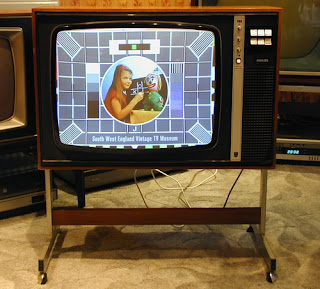 |
| Masthead from the International Thermonuclear Energy Reactor (ITER) project website |
In an experimental plant in southern France scientists are researching the ultimate energy source. They are trying to prove the nuclear fusion can be harnessed to provide an infinite amount of power for the world.
This is
ITER - the International Thermonuclear Energy Reactor project. Their goal is to produce a nuclear reactor that produces at least 10 times more power than it consumes to prove that this type of energy production is a viable commercial proposition. Ideally they want to push this differential out to 50 times. Can you imagine that? I can't. The idea that you get more energy back than you put in is hard to grasp.
People don't like nuclear reactions. They immediately start thinking
Chernobyl or
Fukushima or . . . . or what? What other nuclear accidents can you think of? These two stand out because they were firstly very rare blots on the industry's safety record but also so truly awful and let's face, with better oversight, completely avoidable. The nuclear industry is its own worst enemy when it fails to police itself properly.
So, in an atmosphere of great mistrust and moves against nuclear power, why is ITER pushing ahead?
Well, ITER is not interested in creating new
fission reactors that burn radioactive uranium and all the problems that that brings. They are looking to produce
nuclear fusion where two hydrogen atoms fuse together to create a single helium atom. They are looking to copy what our greatest star has been doing continually for millions of years at temperatures of 15 millions degrees Celsius.
 |
| H-bomb testing in the 1950s |
It's not like we don't know how to bring about nuclear fusion. In the 1950s our testing of hydrogen bombs did that but as we know the output of the energy from a bomb is not the kind of controllable release we want for power generation.
There have been fusion experiments before. One of the biggest scientific hoaxes of modern times came in 1989 when two american scientists, Pons and Fleischmann, claimed that they had achieved
cold fusion in a test tube but were never able to demonstrate it to the assembled scientific community.
The ITER project is no backroom science experiment. This is a truly international project that will consume billions of dollars of investment.
The reactor is housed in a
tokamak - a giant container that uses magnetic fields to hold a plasma (a cloud of ionised gas) at 150 million degrees Celsius (yes, 10 times the temperature of the sun's fusion). ITER's process uses
deuterium, a naturally occurring form of hydrogen with one neutron in the nucleus, together with
tritium (which has 2 neutrons). The deuterium and tritium atoms fuse to form a helium atom. This apparently is the most efficient known fusion reaction we can achieve.
 |
| Nuclear fusion using deuterium and tritium fusing to form helium |
The energy from the fusion reaction is absorbed by the walls of the tokamak then used to heat water to create steam that turns a turbine to generate electricity.
These guys are serious about their mission. Their website says it all - "In our opinion, the use of fusion energy is a "must" if we want to be serious about embarking on a sustainable development for future generations".
The very best of luck to them.
More on the International Thermonuclear Energy Reactor project
The International Thermonuclear Energy Reactor project
How does a fusion reactor work? (HowStuffWorks)
ITER project (The Independent UK)
Russian firm Rosatom is building ITER plant (Telegraph UK)

































